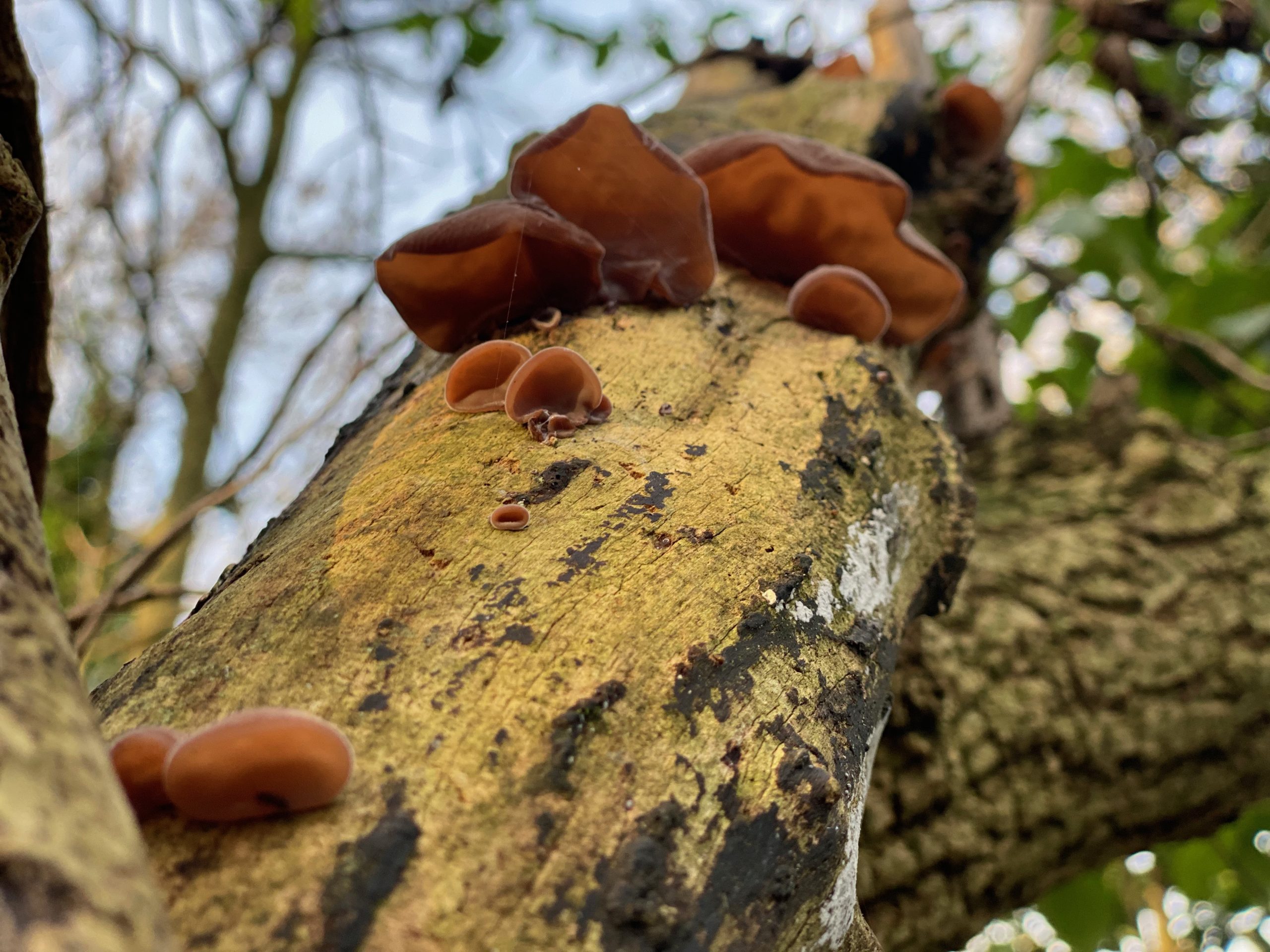”Exiting winter we say farewell to the winter mushrooms. Here we take a quick look at 3 mushrooms found in the UK in winter and how to make best use of them.
GeorgeFlavour Fred
Winter Wild Mushrooms: Oyster mushrooms, Jelly Ear, Velvet Shank
To celebrate the end of winter mushrooms and test out my Private Dinner offer we had a feast with friends incorporating the last of the winter mushrooms still out. Using winter oyster, jelly ear & velvet shank mushrooms here you will see how to identify, preserve and cook these delights when theres not much more out.
Identification, Foraging & Preservation: Winter Oyster Mushrooms
Winter oyster mushrooms (Pleurotus ostreatus) grow more often on beech where these crowded gilled shelf-like mushroom prefer damaged and fallen trees, branches and often cut logs/log piles. Oyster mushrooms are often now cultivated and widely available however the flavour, in my opinion, will never ever compare to a tasty wild mushroom.
This very firm texture means they can stand up to some serious cooking at high temperatures and perfect for a bhaji or even faux meat. There can often be a huge haul available too so preservation is key and as winter mushrooms they can freeze quite well. Other preservation methods include; oyster mushroom jerky; pickled; dried and powdered for seasoning (mix with dried seaweed for my favourite wild umami seasoning).
Care should always be taken with wild mushrooms and always forage with an expert. In this family sits Angel Wings (Pleurocybella porrigens) which has been proven to have compounds that link to catastrophic brain damage. They are much more slight, paler and found on stumps/fallen trees in coniferous woodlands. Pleurocybellaziridine is the unstable amino acid that has the link to brain damage and there is plenty of research information if you want to go have a look.


Identification, Foraging & Preservation: Jelly Ear & Velvet Shank
JELLY EAR (WOOD EAR) MUSHROOM
As stated in the video the Jelly Ear (Auricularia auricula-judae) mushroom is not a texture much sort after in western cooking. This mushroom can be found all year round but seems to love January and February in particular. You will find it, for the most part, on fallen elder. It’s quite hard to mistake this for another mushroom if you are collecting off elder so I stick to that as a guideline.
You can find this mushroom dried in Chinese supermarkets as when dry they shrink to 1/10 of their size when wet and go black. Making a great addition to broths, soups, powdered and fried to be crispy. Many other foragers dry this mushroom and re-hydrate in a syrup or booze and then dip in chocolate. At this point it no longer tastes like a mushroom so I prefer using it as an ingredient within dishes.


Identification, Foraging & Preservation: Velvet Shank
VELVET SHANK
AKA Enokitake (Flammulina velutipes) this mushroom is frost hardy so can freeze solid, de-frost and continue to grow. The orange/brown cap is a nice mushroom to spot on a winter walk and looks like a golden beacon amongst the browns.
The gills start of white but as it ages they go pale yellow. The stipe (stem) goes from a pale yellow to dark brown/black with age and as the name suggests it has a smooth velvety feel. It tends to grow on dead/dying deciduous wood and as you can see clusters considerably.
It is mildly nutty and for that reason choice in many dishes like stir-fry, noodle dishes, ramen, soba, wrapped & Bbq’d just to name a few.


240g mushrooms (oyster, jelly ear, velvet shank)
240g gram flour
120g rye flour
150g vegan block / clarified butter
1tsp turmeric
2tsp cumin seeds
1/5 tsp fennel seeds
1 tsp ground ginger
5 roasted garlic cloves
2 large onions Chilli (optional)
Salt and pepper
METHOD
In a pestle and mortar grind down all of the spices. Then grab a large bowl add all the dry ingredients then onions, garlic, vegan block or clarified butter. Mix together until you get a thick batter. If it’s a bit too thick add a splash of water to get the right consistency.
Deep fry (180 degrees C) a loose tablespoon worth and continue being careful to not overcrowd the pan. Continue setting aside cooked bhaji’s and finishing the mix.


